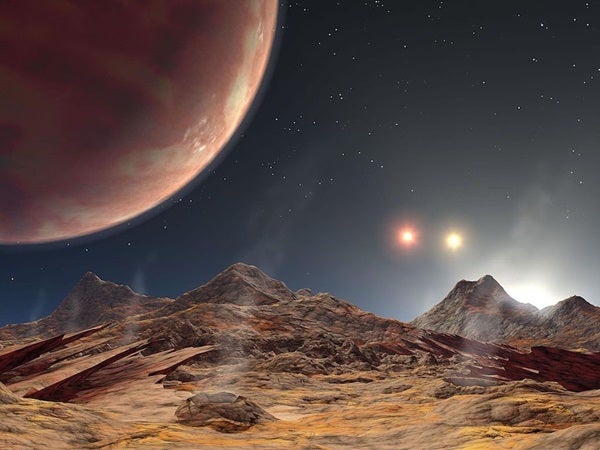Because circumbinary planets circle two stars instead of one, they routinely experience erratic orbits, which often results in them being either ejected from the system altogether, or cannibalized by one of the system’s stars. To calculate the odds of a given exoplanet surviving long enough to evolve life, astronomers must solve a notoriously difficult problem known as a three-body problem. The tricky part is that three-body problems can quickly devolve into chaos, and astronomers often have trouble solving them accurately.
“When we simulated millions of possible planets with different orbits using traditional methods, we found that planets were being predicted as stable that were clearly not, and vice versa,” said Chris Lam, lead author of the study and recent graduate of Columbia University, in a press release. Since calculating the stability of a planet’s orbit over time is a major factor in determining its habitability, this is quite a problem.
In order to help solve the complicated three-body problems associated with circumbinary planets, a team of astronomers is trying out a new approach — and it seems to be doing the trick. In a study recently published in the journal Monthly Notices of the Royal Astronomical Society, the researchers show that calculations carried out by artificial intelligence — specifically a deep neural network — can make more accurate predictions than humans can about the long-term stability of circumbinary planets.
“Classification with numerous complex, inter-connected parameters is the perfect problem for machine learning,” said David Kipping, a professor at Columbia University and supervisor of the study.
To test how effective artificial intelligence is at predicting the lasting stability of circumbinary planets, the researchers created 10 million hypothetical circumbinary planets with a multitude of different orbits. A simulation was then carried out for each of these planets to test whether their orbits were stable over time. After just a few short hours of training with this dataset, the AI network was already achieving accuracies greater than those attained through standard methods. While human-developed algorithms failed to predict what would happen to planets entering regions of instability about half of the time, the accuracy of the AI’s predictions never dropped below 86 percent.
To date, astronomers have confirmed about two-dozen circumbinary planets, and with the recent launch of NASA’s Transiting Exoplanet Survey Satellite (TESS), they expect to find many more. “Our model helps astronomers to know which regions are best to search for planets around binary stars,” said Lam. “This will hopefully help us discover new exoplanets and better understand their properties.”
So, at least for circumbinary planet-hunters, it appears we have finally found the droids we are looking for.
Co-author of the new study, David Kipping, explains why three-body problems are so difficult to solve and how artificial intelligence can help.
D. Kipping/Cool Worlds Lab
The deep neural network used in this study is publicly available at https://github.com/CoolWorlds/orbital-stability.










